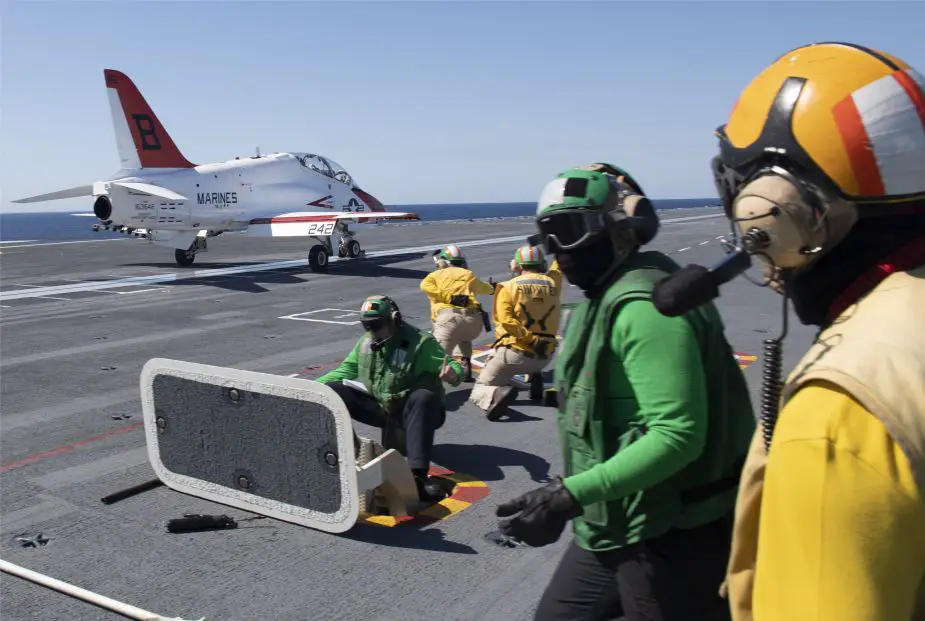Breaking news
US Navy USS Gerald R. Ford aircraft carrier recently completed testing of vital combat system.
U.S. Navy aircraft carrier USS Gerald R. Ford (CVN 78) recently completed testing of vital combat systems while underway in the Atlantic Ocean. These tests, conducted during Ford’s post-delivery test and trials (PDT&T) phase, are designed to stress the ship’s combat system capabilities and demonstrate the successful integration of new technologies, which the crew employs to defend the aircraft carrier.
 Sailors work on the flight deck of the aircraft carrier USS Gerald R. Ford (CVN 78) as a T-45C Goshawk assigned to Training Squadron (VT) 7 launches, April 7, 2020. (Picture source US Navy)
Sailors work on the flight deck of the aircraft carrier USS Gerald R. Ford (CVN 78) as a T-45C Goshawk assigned to Training Squadron (VT) 7 launches, April 7, 2020. (Picture source US Navy)
The U.S. Navy aircraft carrier Gerald R. Ford is a first-in-class aircraft carrier and the first new aircraft carrier designed in more than 40 years. Ford is underway conducting carrier qualifications in the Atlantic Ocean. It was delivered to the U.S. Navy on 31 May 2017 and formally commissioned by President Donald Trump on 22 July 2017.
Ford’s first certification of integrated combat systems tested the Air Traffic Control Radar Beacon (ATCRB) and Identification of Friend or Foe (IFF). The tests, conducted over several days, evaluated the ATCRB’s ability to track air and surface contacts and to identify friendly and enemy aircraft using an advanced identification system. IFF is used not only for positive, secure, friend identification, but also to control aircraft.
Ford also recently completed sea-based developmental testing (SBDT) of vital combat systems. This was the first full test of the integrated combat system against tactical adversaries. Testing was conducted with Kfir and Hawker Hunter jet aircraft from the Airborne Tactical Advantage Company. Ship’s crew tracked the aircraft, using Ford’s Dual Band Radar (DBR).
Ford also recently completed sea-based developmental testing (SBDT) of vital combat systems. This was the first full test of the integrated combat system against tactical adversaries. Testing was conducted with Kfir and Hawker Hunter jet aircraft from the Airborne Tactical Advantage Company. Ship’s crew tracked the aircraft, using Ford’s Dual Band Radar (DBR).
SBDT is conducted to stress the ship's combat system capabilities to include the integration of new technologies Dual Band Radar with Rolling Airframe Missile and Sea Sparrow missiles. During SBDT operation 6B, Ford ran a risk reduction scenario for an AQM-37 high diving missile, an exercise that will be required during Combat System Ship Qualification Trial in order for the ship's combat systems to be considered fully operation capable.


























